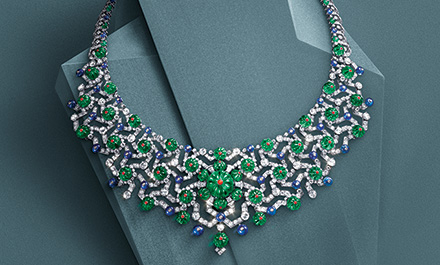Brands, technology, sustainability and experiential shopping are inspiring jewellers to recalibrate their design directions and influencing the buying decisions of today’s increasingly insightful consumer.
This article first appeared in the JNA May/June 2024 issue.
Unprecedented technological developments like digital and livestream shopping alongside the rise of social concepts such as sustainability and experiential retail are redefining the way jewellery is designed, marketed and bought in a more modern world.
And the business landscape is only evolving at a faster rate, with every new change presenting untapped growth potential for jewellers as well as an opportunity for the consumer to experience jewellery in a different way.
Muriel Piaser, global fashion and business developer and founder of Muriel Piaser Consulting and Paris-based trend show Precious Room by Muriel Piaser, called this the “democratisation of the high and fine jewellery market.”
Citing results of a trend analysis prepared by her consulting firm pre- and post-pandemic, Piaser said luxury jewellery brands are becoming more experience-focused, giving rise to the so-called “phygital” business concept.
Mirroring paradigm shifts in the fashion industry, the jewellery sector is undergoing such large-scale changes as a direct result of technological advances and their impact on consumer behaviour.
For instance, readily accessible big data and analytics are now used by jewellery companies to tailor-fit consumer engagements and online-and-offline experiences.
Also shaping purchasing decisions are influencer-plus-celebrity marketing and social media relevance. The more “relatable and fun” the social media content is, the more attractive the products would be for consumers, specifically tech-savvy millennials and Gen Zs.
“Fine and high jewellery brands have had to evolve to a new audience,” noted Piaser. “This is thanks to the innovation of technology and the young generation’s desire to be inspired and moved by fashion.”
Rise of jewellery brands
More than just a symbol of wealth in modern society, branded jewellery is highly favoured today as buyers seek authenticity and products that they can trust. This is particularly true in Asia Pacific and other emerging economies, noted Piaser.
Valentin Andres, industrial and supply chain director at jewellery brand FRED, said demand for branded jewellery rose exponentially post-pandemic, leading to a record turnover for the company in 2023 compared to 2022, 2021 and 2020.
FRED is owned by luxury conglomerate LVMH Moët Hennessy Louis Vuitton.
Andres explained, “The key success factor here and the prevailing trend in the jewellery sector is scarcity – the lack of goods in the market creates desirability. There are people eager to wait for new jewellery pieces. Also, low production encourages demand.”
The business for branded jewellery is booming essentially because the market is still dominated by unlabelled goods, he added.
Even established luxury brands such as Louis Vuitton and Dior, which are more fashion-oriented, recognise the importance of brands by venturing into high jewellery.
“Customers want grand jewellery,” remarked Andres. “From our perspective, we also see stronger demand for two price point items – high jewellery and a core range, which is more affordable.”
Evolving role of jewellery
Jewellery is rapidly becoming a symbol of emerging social trends, too. Piaser and Andres both alluded to growing consumer awareness of sustainability initiatives, which could greatly sway buying decisions.
Consumers have become more discerning and are on the lookout for value for money and whether a company’s sustainable practices and vision align with their values.
Andres explained that customers are demanding sustainable jewellery and want to see products that can be reused multiple times either by repairing the item, resetting the stone or recycling the gold.
Hong Kong-based Julien-Loïc Garin, who founded jewellery brand The Collection by JLG, also highlighted the changing role of jewellery in society. Once defined by strict codes on who can wear jewellery or when and how it is worn, jewellery has now become more fluid and universal.
“Pop culture very much defines new codes now,” he noted. “For instance, we see young people, even men, wearing pearl necklaces. You can also mix and match jewellery pieces and make them more fun and trendier. Jewellery can also be a symbol of belonging to a certain group or community.”












